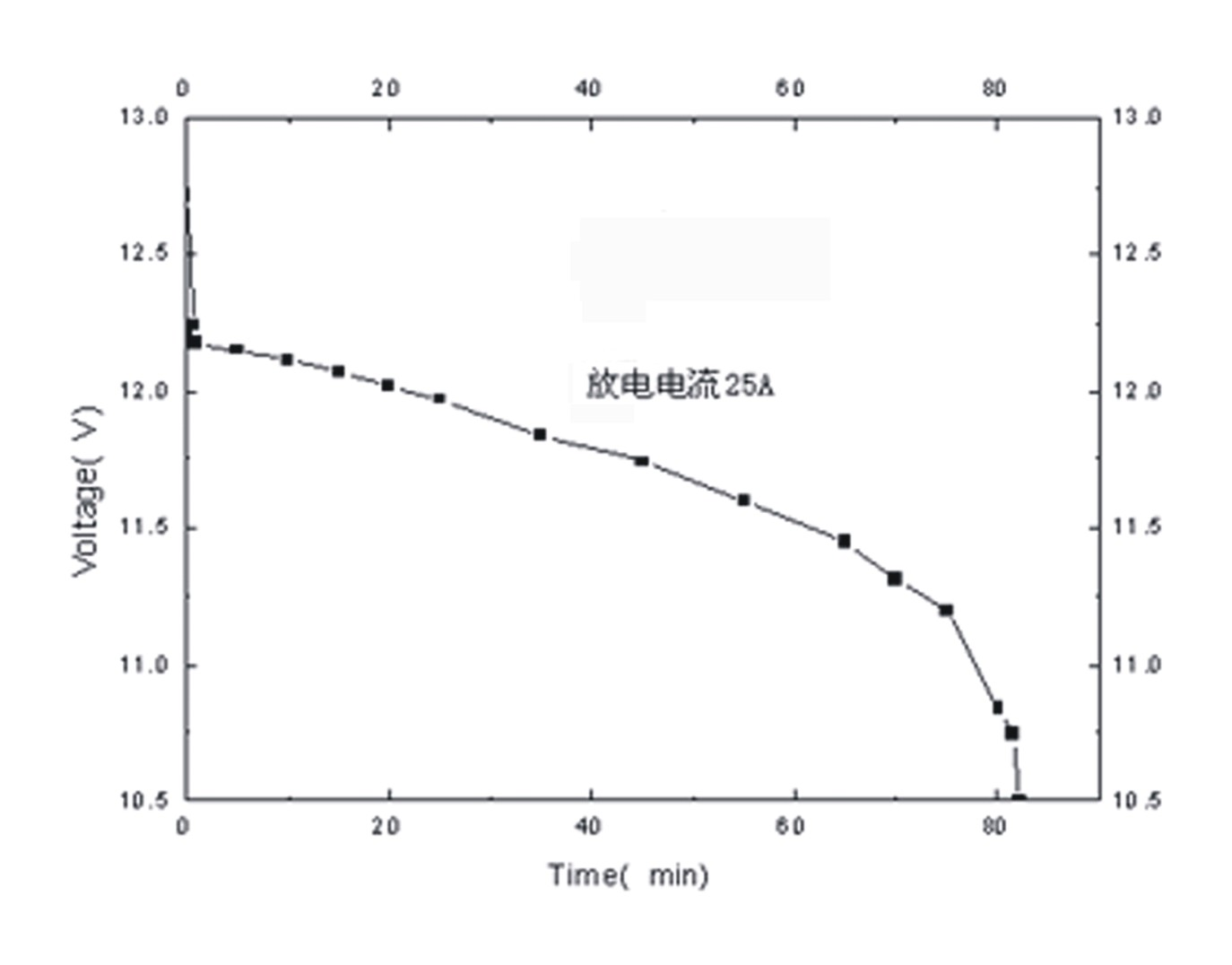Solid electrolyte for lead-acid storage battery
A lead-acid battery, solid-state technology, applied in the direction of lead-acid batteries, etc., can solve the problems of poor deep discharge performance, easy leakage of batteries, easy loss of water, etc.
- Summary
- Abstract
- Description
- Claims
- Application Information
AI Technical Summary
Problems solved by technology
Method used
Image
Examples
Embodiment 2
[0023] Add 15g of silica powder, 5g of aluminum oxide powder, 40g of tetrafluoroethylene-vinylidene fluoride copolymer, and 500g of acetone solution of dibutyl phthalate (mass concentration: 0.8%) to a mixing chamber In a container, heat to 50°C and stir to form a uniform slurry. The resulting slurry is coated into a film with a coating machine, and the film is washed with methanol to remove dibutyl phthalate and acetone in the film to obtain a modified tetrafluoroethylene-vinylidene fluoride copolymer with a microporous structure membrane. The obtained membrane is then immersed in sulfuric acid, taken out after the adsorption is saturated, and dried in air to obtain a solidified electrolyte, which can absorb 54g of sulfuric acid per 100g of membrane.
Embodiment 3
[0025] Add 5g of silicon dioxide powder, 25g of aluminum oxide powder, 30g of tetrafluoroethylene-vinylidene fluoride copolymer, and 1000g of dibutyl phthalate in acetone (mass concentration: 1.8%) to a mixer In a container, heat to 50°C and stir to form a uniform slurry. The resulting slurry is coated into a film with a coating machine, and the film is washed with methanol to remove dibutyl phthalate and acetone in the film to obtain a modified tetrafluoroethylene-vinylidene fluoride copolymer with a microporous structure membrane. The obtained membrane is then immersed in sulfuric acid, taken out after the adsorption is saturated, and dried in air to obtain a solidified electrolyte, which can absorb 185g of sulfuric acid per 100g of membrane.
[0026] A 40Ah lead-acid battery (lead dioxide positive electrode / solid electrolyte / sponge negative electrode / solid electrolyte / sponge negative electrode / ..... . / Solidized Electrolyte / Lead Dioxide Cathode). After the battery is deep...
PUM
| Property | Measurement | Unit |
|---|---|---|
| diameter | aaaaa | aaaaa |
Abstract
Description
Claims
Application Information
 Login to View More
Login to View More - R&D
- Intellectual Property
- Life Sciences
- Materials
- Tech Scout
- Unparalleled Data Quality
- Higher Quality Content
- 60% Fewer Hallucinations
Browse by: Latest US Patents, China's latest patents, Technical Efficacy Thesaurus, Application Domain, Technology Topic, Popular Technical Reports.
© 2025 PatSnap. All rights reserved.Legal|Privacy policy|Modern Slavery Act Transparency Statement|Sitemap|About US| Contact US: help@patsnap.com

